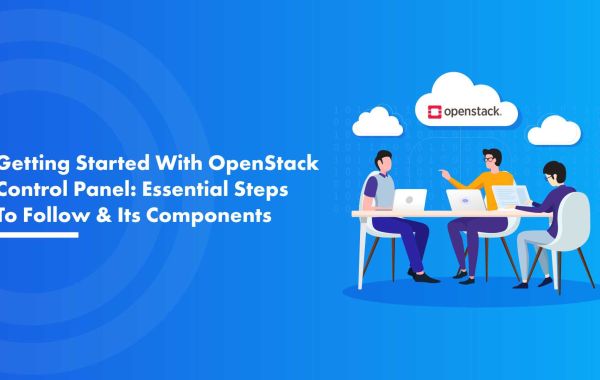Without understanding the concept of OpenStack, you can’t just simply understand it and it will get even more complex by the passing time.
OpenStack is an open-source collection for tools and software that is much of a help in cloud computing.
If you really want to understand OpenStack, you will need to follow some steps that can lead you to interact and understand OpenStack and its billing solution on your own!
Steps to follow while getting started with OpenStack
There are many people who look for where actually to start when they are starting their journey with OpenStack. One can easily start their journey from the resources mentioned below:
Get yourself a dedicated machine
First off, you need to find yourself a machine, wholly dedicated to OpenStack on which you can quickly launch your OpenStack locally.
You can also take git clone into consideration and clone devstack or you can opt for the OpenStack packages provided by distributions. This way, you can also get familiar with OpenStack by actually running it.
Get IRC client
You are required to get yourself an IRC client, with which, you can join OpenStack IRC channels by registering and securing your IRC nick.
There are many channels of OpenStack including #openstack-trove, #openstack-dev, #openstack etc.
Register yourself with Launchpad, GitHub, and sign the ICLA
It is a must to get yourself registered for the account of launchpad and the OpenStack ICLA is also needed to be signed by you.
If you do not have a GitHub account of your own, then what are you waiting for? Get one for yourself!
Pick an area of interest
You need to pick an area of interest if you really want to contribute your services. There are many areas of interest like Trove is used for databases, Magnum and Nova are used for compute, and Manila, Swift, and Cinder are used for storage.
You can establish the list of the projects you would be interested in after getting to know about them and name it "Watched Projects".
One will also be able to see the reviews of code for all the projects in which, you would be interested. You can also then start participating in the process of development and follow the reviews that are currently active.
There are people who can help as they are just one message away but you don't need to expect a reply instantly. You can ask your queries freely at #Openstackdev or #Openstack and on the mailing list too as the OpenStack community is way too friendly.
OpenStack Components that are needed to be understood
You can easily set up a private cloud of yours by using your bare metal. The OpenStack control panel comes with many different components that are important for you to understand:
Nova
Nova is the computing engine that powers OpenStack. By the way of machine images, it lets the users manage and make virtual servers. It is also considered the brain because of its centralized computing capabilities.
Ceilometer
The ceilometer monitors the usage of cloud services for different people and after that, it performs the tasks of billing. All the tracks are captured by a ceilometer for the usage of the components.
Neutron
Neutron makes sure that the components of OpenStack are communicating with each other with efficiency because it works as a networking element of OpenStack portal. It simplifies the management of networks and is completed powered by API, which makes it completely scalable.
Neutron has its own importance and it can't be neglected when it comes to the security of the network. The management and design of the SDN security become easier with the flexibility offered by the neutron.
Horizon
Horizon is the dashboard of OpenStack and it is considered as the interface that makes it possible for you to interact with the services of OpenStack. Admins can easily get to know about what is happening in their OpenStack control panel and sort things out if needed.
Cinder
All the storage provided for the instances and servers in the environment of the cloud is provided by Cinder as it is the element of block storage. Some people might get confused while understanding block storage, so basically block storage organizes the sets of data into blocks.
It is also helpful in providing flexibility to the admins for the optimization of the performance of the cloud elements, completely depending on the block storage.
Orchestration Heat
Such resources that are made available by the OpenStack infrastructure of the cloud environment are the ability, provided by the Orchestration Heat. Orchestration Heat also helps you to control the access of different applications to the resources which they need to run and also generate files, controlling the allocation of resources designed by you.
Swift
The file and object storage system of OpenStack portal is known as Swift. Swift is given leverage by the users for its faster scaling and backups of the data which is crucial.
Keystone
Keystone provides you with the directory of people for their interaction with your OpenStack services. You can control the authorization and authentication of the users, and you are also provided with the control to see the utilization of services of the users.
Glance
The retrieving and storage of your virtual machine's disk image is the responsibility of glance. Such images can be helpful for the operating system as they can leverage the deployment of the VM instances.
Trove
Trove provides Database-as-a-service (DBaaS) to the users of OpenStack by providing a database that is relational so the user will not have to worry about the monitoring, deployment, patching, restores, backups, and configuration.
Final Verdict
Getting started with OpenStack might not be that difficult if you have good understanding of OpenStack and its components.
There are some steps which you need to follow and you won’t face any difficulties while dealing with OpenStack.
Make sure to keep interacting with the OpenStack community because the people there can guide you whenever you face any hurdle.







